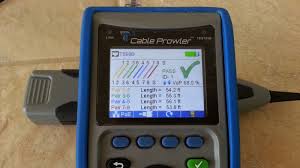Cable Testing And Certification
 Cable testing and certification are obviously complicated terminologies that may be difficult for laypeople to understand. Nonetheless, it is important to become familiar with these functions since they have become common fixtures in your homes. It does not matter whether you are simply making repairs or installing new cables, testing always plays an essential role. Testing offers a degree of assurance that the links provide the necessary transmission capacity that supports data communications.
Cable testing and certification are obviously complicated terminologies that may be difficult for laypeople to understand. Nonetheless, it is important to become familiar with these functions since they have become common fixtures in your homes. It does not matter whether you are simply making repairs or installing new cables, testing always plays an essential role. Testing offers a degree of assurance that the links provide the necessary transmission capacity that supports data communications.
Cable testing implements have been designed with multiple features for a variety of tasks. However, these differ in terms of costs, performance and applications. Testing can be classified into certification and verification. Certification is vital because it ensures conformity of the cabling system to industry benchmarks. Certification instruments decide whether a particular connection complies with ISO or TIA (Telecommunications Industry Association) guidelines. In fact, it is the final step completed by structured cable manufacturers before granting warranties for new installations.
In this technology domain, certification is acknowledged as proof of professional status. The Fiber Optic Association (FOA) oversees adherence to certification requirements and authorizes schools to grant training that meets its standards. FOA programs are created and maintained by experts in the fiber optic enterprise.
Certification indicates that you have accomplished specific performance criteria established by the certifying organization. It includes knowledge, skills and abilities either through training or through experience acquired over the years.
Certification is not simply an ordinary license; it is official consent to do business within a particular jurisdiction. The majority of states in the country require licensing for service providers installing communications cabling. Be sure to check your local area and find out the requirements for licensing. Testing and Certification are the foremost steps in the cable installation process, and it is imperative that all components are tested carefully.
It is not enough to plug in the network equipment set-up and find out if it works properly. Certification is needed to prevent unnecessary and costly improvements or refurbishment in the future. Network examination and certification of all new installations as well as existing networks are provided for the whole infrastructure.
Incidentally, you also need to learn that in communications cabling, standards delineate the kinds of cabling, yardsticks that define cabling, connections, cabling architecture, and testing prerequisites. These standards can minimize downtime and installation costs. At the same time, standards capitalize on system availability and prolong the life span of cabling systems. Lastly, paradigms allow manufacturers to create systems that will accommodate current technologies and equipment without difficulty. The bottom line is to find the company that can do these things for you efficiently.
